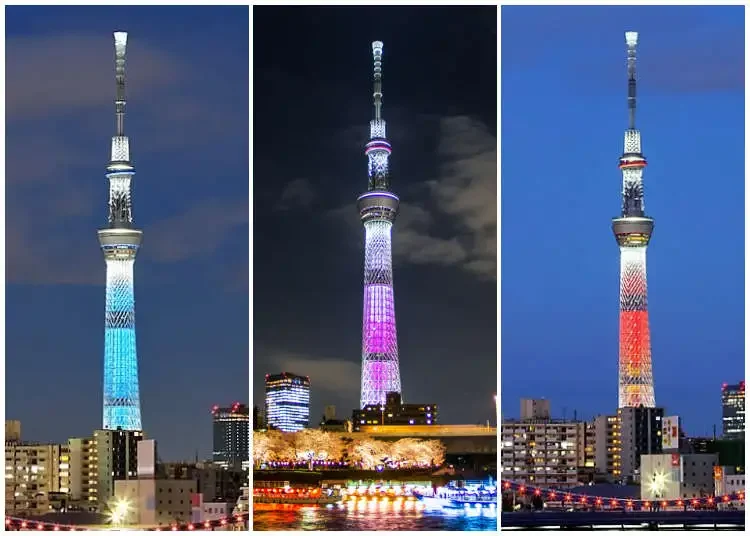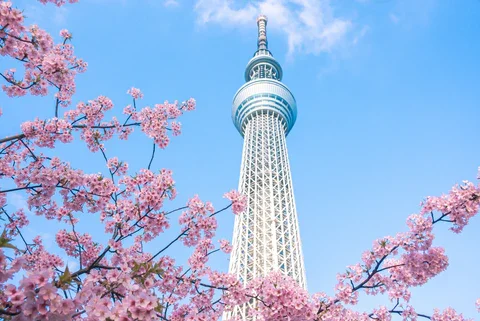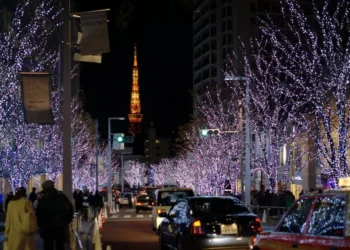No products in the cart.
Tokyo Skytree: Japan’s Towering Icon And What To Do Around It
Tokyo Skytree is not just the tallest structure in Japan—it is a symbol of modern Tokyo and one of the most visited landmarks in the country. Standing at 634 meters, it offers breathtaking views, cultural experiences, and plenty of things to do in and around its base. Whether you are visiting for photography, shopping, dining, or simply to admire its scale, Tokyo Skytree is a must-see for anyone exploring Japan’s capital.
If you haven’t yet ventured up the Tokyo Skytree, it should be at the top of your list!
The History And Purpose Of Skytree
The historical significance of Tokyo Skytree adds depth to your visit, making it even more worthwhile.
Moreover, being part of the Tokyo Skytree experience means enjoying the surrounding cultural sites.
The construction of Skytree began in 2008 and was completed in 2012. It was built primarily as a broadcasting tower to replace Tokyo Tower, which had become surrounded by high-rise buildings that interfered with signal transmission. Its impressive height of 634 meters was chosen not only to ensure optimal broadcasting coverage but also because the number “634” can be read in Japanese as “Musashi,” an old name for the Tokyo region.
Skytree was designed with both technological function and aesthetic appeal in mind. Its architecture incorporates traditional Japanese design elements, such as the curved lines inspired by samurai swords, combined with cutting-edge earthquake-resistant engineering. This blend of tradition and modernity makes Skytree a fitting representation of Tokyo itself.
Visiting The Observation Decks
One of the main attractions of Skytree is its observation decks, which offer panoramic views of Tokyo and beyond. There are two decks:
- Tembo Deck at 350 meters: This deck provides a wide, 360-degree view of the city. On clear days, you can even see Mount Fuji in the distance.
- Tembo Galleria at 450 meters: Often referred to as “the world’s highest skywalk,” this spiraling corridor gives visitors the sensation of walking in the sky, with glass panels offering views straight down.
Both decks are accessible via high-speed elevators, and visiting them is a highlight for anyone who wants to experience Tokyo from a unique perspective.
The Best Spot To View Skytree From The Outside
While seeing the city from Skytree is spectacular, some visitors prefer to photograph or admire the tower from afar. One of the best viewing points is from the Sumida River, particularly around the Asakusa area. The juxtaposition of Skytree with the traditional architecture of Asakusa’s Senso-ji Temple creates a striking contrast.
Another excellent spot is from Oshiage Station’s surroundings, where you can see Skytree towering above the neighborhood. For night views, Sumida Park offers a perfect location to capture the tower lit up in seasonal colors.
What To Do Inside Tokyo Skytree Town
For those who want to capture the best images, having Tokyo Skytree as your backdrop will ensure stunning photographs.
With various angles to choose from, photographing Tokyo Skytree is a delight for both amateur and professional photographers.
Inside Tokyo Skytree Town, visitors can learn more about the architectural significance of the Tokyo Skytree itself.
As you explore Tokyo Skytree Town, keep an eye out for exhibitions that showcase the history of the Tokyo Skytree.
Skytree is part of a larger complex known as Tokyo Skytree Town, which includes:
- Tokyo Solamachi: A shopping and dining center with over 300 stores selling everything from Japanese souvenirs to high-end fashion.
- Sumida Aquarium: Located on the 5th and 6th floors, this modern aquarium features penguins, jellyfish, and beautifully designed tanks showcasing marine life from Tokyo Bay and beyond.
- Planetarium Tenku: A state-of-the-art planetarium offering immersive star-gazing experiences with high-definition visuals and sound.
These attractions make Skytree not just a quick sightseeing stop but a full-day destination.
Seasonal Events And Illuminations
One of the unique aspects of Skytree is its seasonal illuminations. The tower is regularly lit up in different colors to celebrate holidays, events, and cultural themes. In spring, it may glow pink to represent cherry blossoms; in summer, cool blue tones dominate; and during New Year celebrations, gold and red light up the night.
Visiting during the nighttime offers a unique perspective of Tokyo Skytree, especially with its vibrant illuminations.
Tokyo Skytree illuminations often create a magical atmosphere, making for an unforgettable evening.
Special events are also held throughout the year, including limited-time exhibitions, pop-up shops, and cultural performances. Checking the schedule before your visit ensures you won’t miss out on unique experiences.

Dining With A View
Skytree offers several dining options with spectacular views. The Sky Restaurant 634, located within the Tembo Deck, serves a fusion of Japanese and French cuisine. Dining here allows guests to enjoy gourmet meals while overlooking the Tokyo skyline.
Tokyo Solamachi also houses numerous restaurants, from casual ramen shops to high-end sushi counters. For dessert lovers, there are specialty cafes and patisseries offering treats you can enjoy while gazing up at Skytree from below.
How To Get There
Skytree is located in the Oshiage district of Sumida, Tokyo. It is directly connected to Oshiage Station, served by the Tokyo Metro Hanzomon Line, Keisei Oshiage Line, and Toei Asakusa Line. Another option is to walk from Asakusa, which takes about 15 minutes and offers scenic views along the Sumida River.
Because of its convenient location, it is easy to combine a trip to Skytree with other nearby attractions, such as Senso-ji Temple in Asakusa or a Sumida River cruise.
Cultural And Economic Impact Of Skytree
Since its opening, Skytree has become a major tourism driver in Tokyo, attracting millions of visitors annually. It has revitalized the Sumida area, bringing in new businesses, hotels, and restaurants. Culturally, it has become an icon of Tokyo’s modern identity, frequently appearing in media, advertisements, and souvenirs.
The tower also plays a vital role in Japan’s broadcasting infrastructure, transmitting television and radio signals to the entire Kanto region. Its design and engineering have been praised internationally, adding to Japan’s reputation for innovative architecture.
Tips For Visiting Skytree
- Book tickets in advance to avoid long waits, especially during weekends and holidays.
- Visit in the morning for clearer views, as haze often builds up in the afternoon.
- For photography, sunrise and sunset offer the most dramatic lighting.
- Explore Tokyo Solamachi before or after going up the tower for shopping and dining.
Conclusion
Skytree is more than just a tall structure—it is a symbol of Tokyo’s balance between tradition and innovation. From its breathtaking observation decks to the vibrant Tokyo Solamachi complex, it offers something for every type of traveler. Whether you are enjoying the view from inside, capturing its beauty from the Sumida River, or experiencing its seasonal illuminations, Skytree delivers a uniquely Tokyo experience.
Its towering presence continues to define the city’s skyline, and its role as both a broadcasting hub and tourist destination ensures it will remain a key landmark for years to come. Visiting Skytree is not just about seeing a building—it is about connecting with the energy, culture, and vision of modern Japan.
Ultimately, the Tokyo Skytree represents the perfect fusion of modern design and traditional culture.
Visitors to Tokyo Skytree will find themselves immersed in the vibrant energy of the city.










